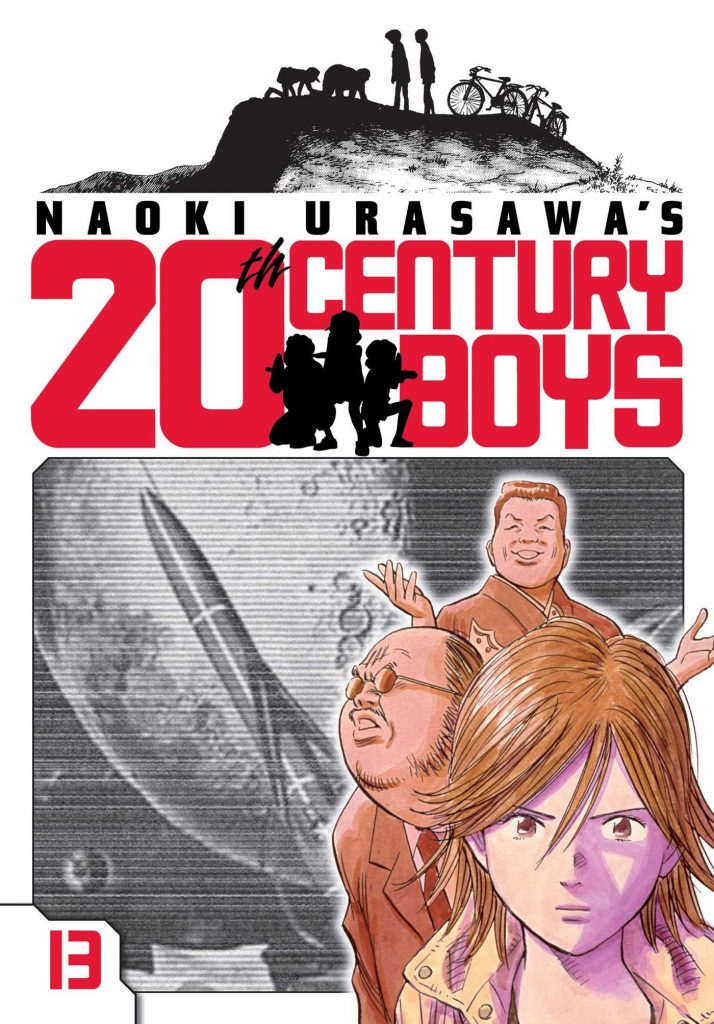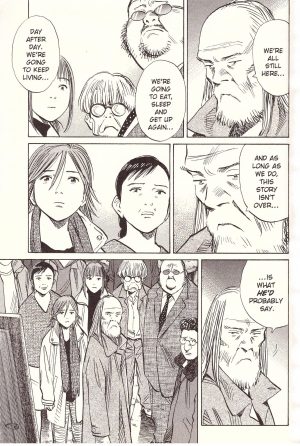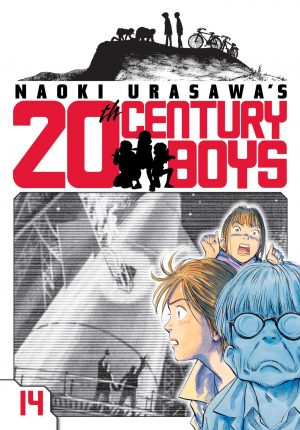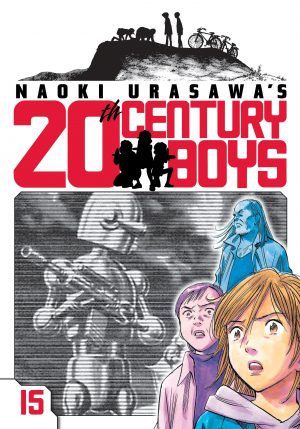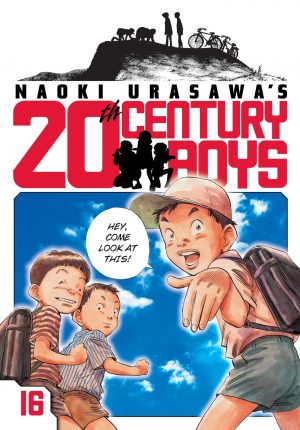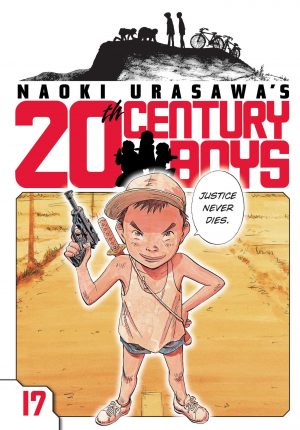Review by Ian Keogh
After a dozen volumes, it’s probably time for another plot overview. In the late 1960s and early 1970s Kenji and his young pals concocted a super-villain’s masterplan for taking control of Japan. By 2000 the cult leader calling himself Friend has used that plan stage by stage to actually take over Japan. Kenji and his other childhood friends were unable to stop the coup. Kenji hasn’t been seen since, but in 2014 his niece Kanna, whom Kenji raised in the absence of his sister, is reuniting his former friends to avenge his presumed death and set things right. The shock climax to Friend’s Face was just that, revealing who Friend is, but seeing as they were killed, while answering a major mystery it also opens up another whole box of questions.
Don’t be carried away by the volume title. Naoki Urasawa plots for the long term, and we’ve only just passed 20th Century Boys’ halfway point. The first matter the childhood friends have to address is how it is that someone they didn’t remember from childhood attended their 1997 reunion and knew everything about them. Then give pause to consider the plot as a whole. Urasawa has just killed his villain and revealed his identity. The mystery sustaining the series since the first volume has been revealed, so where does 20th Century Boys go now? The answer to that is worth discovering yourself, but the seeds have been sown, and it’s horrific.
Because Urasawa spins such a fantastic story, it’s easy to overlook what an incredible artist he is. The sample page features Kenji’s classmates now in middle age, along with their allies letting the news of Friend’s death sink in. The character on those faces and the perfect perspective on the entire group is special, and there’s a reprise a few pages later when we see another bunch of people equally well defined. As Urasawa moves those people about they’re consistent from every angle, and while there’s a similarity to the shape of some women’s faces, Urasawa ensures his massive cast are individually identifiable. It’s all something that’s largely taken for granted as his compelling plot pulls us forward, yet even with standards of American comics dragged upwards in the 21st century there’s still only rarely skill like this on display.
In terms of story Urasawa takes stock for while, showing reaction to what’s happened in various places, and then heads straight into his by now customary mixture of shock, heartbreak, and punch the air moments. Rock star Haru Namio has been a peripheral character so far, yet when his purpose and inspiration is revealed it’s magnificent, and that’s followed by a perfectly pitched chapter showing how far Koizume has grown. The skill is breathtaking as Urasawa moves the plot forward considerably while ostensibly concentrating on a bunch of girls in a burger joint arguing about one of their boyfriends, and that’s before he drops a killer chapter ending. Thereafter there’s a tour around the world. It makes perfect sense in context, and what might have been expected to be an anticlimactic volume actually turns out as one of the best of the series. Beginning of the End is a total gamechanger, and A Boy and a Dream is next. Both are available together as 20th Century Boys Perfect Edition Volume 7.
